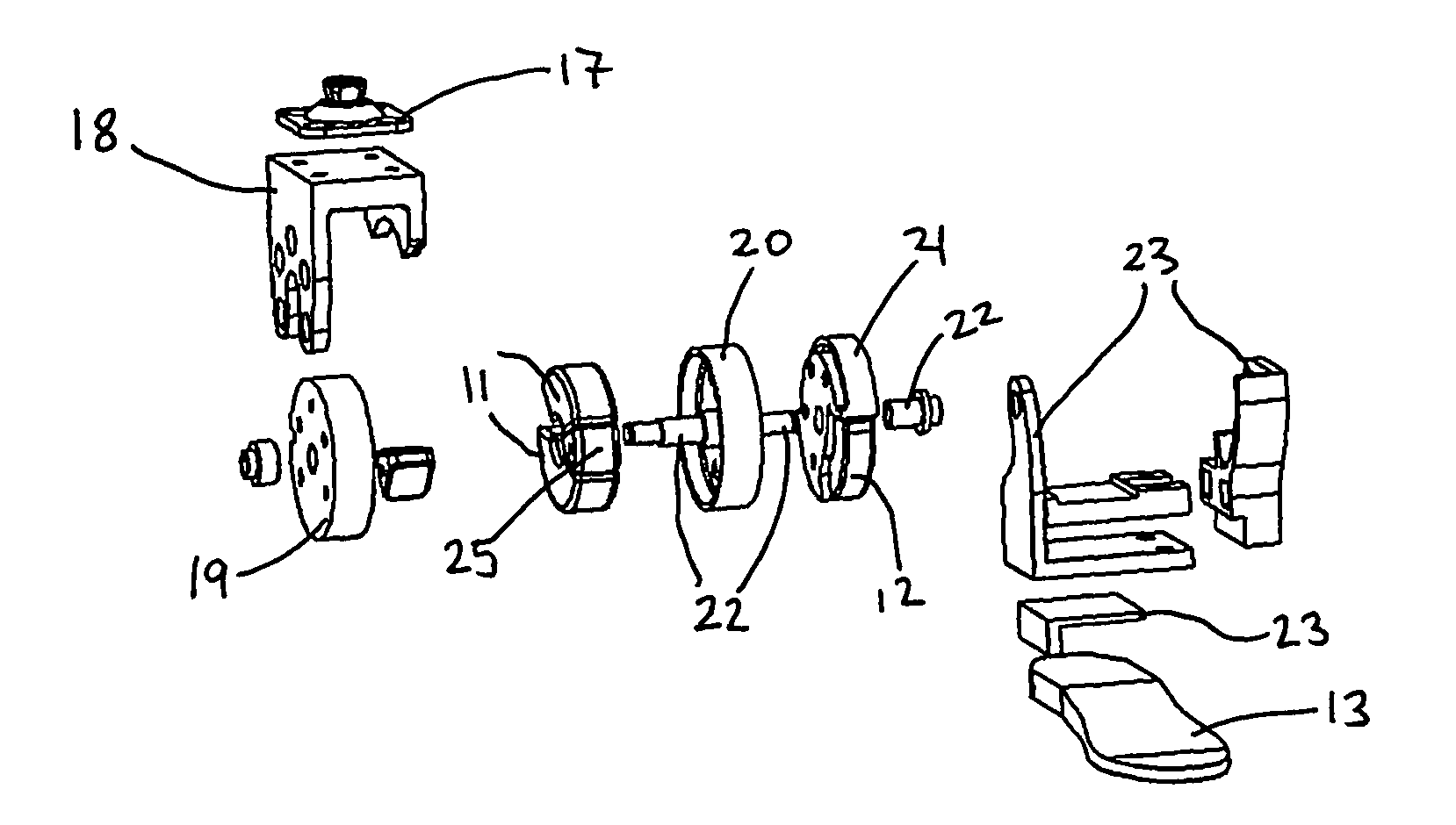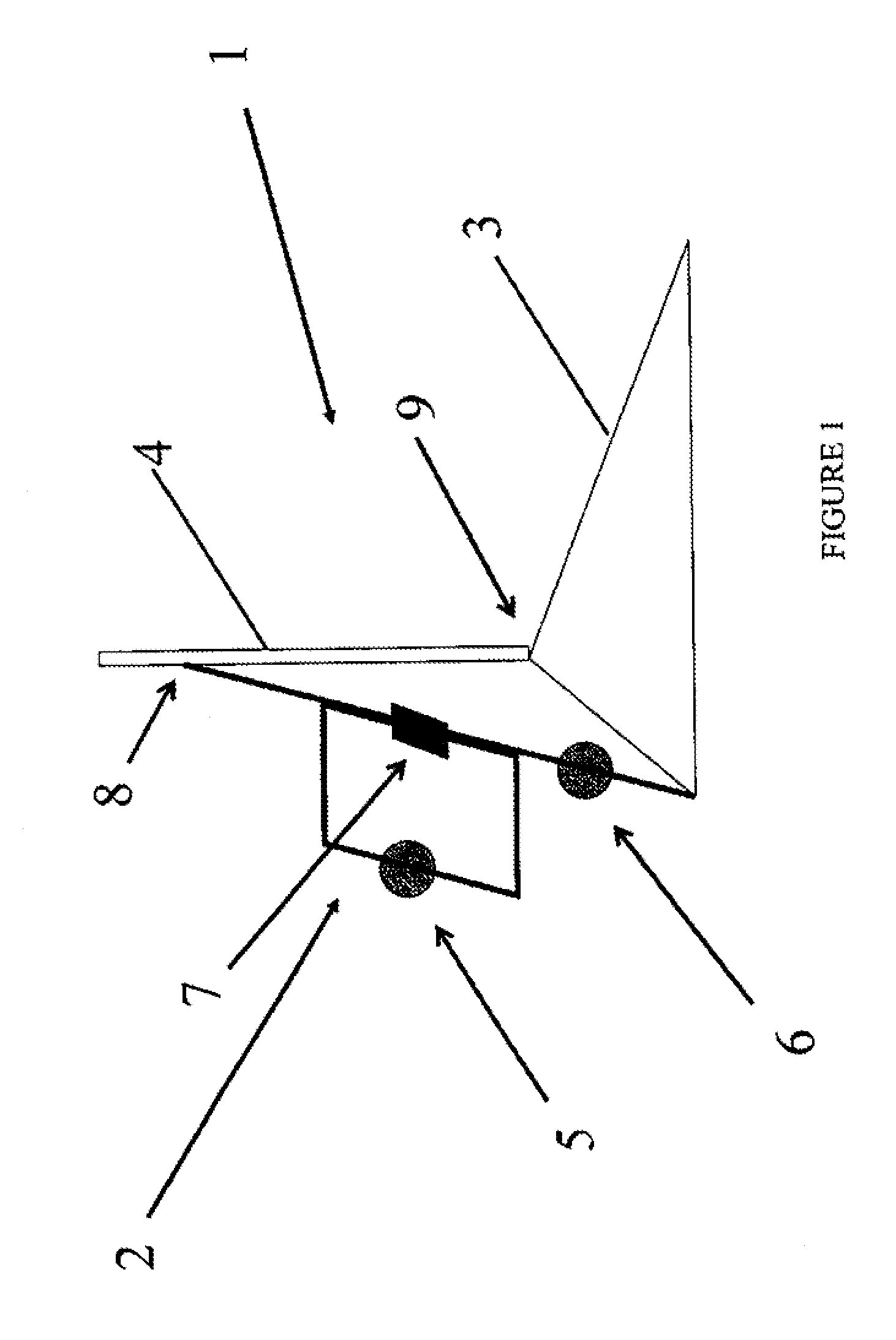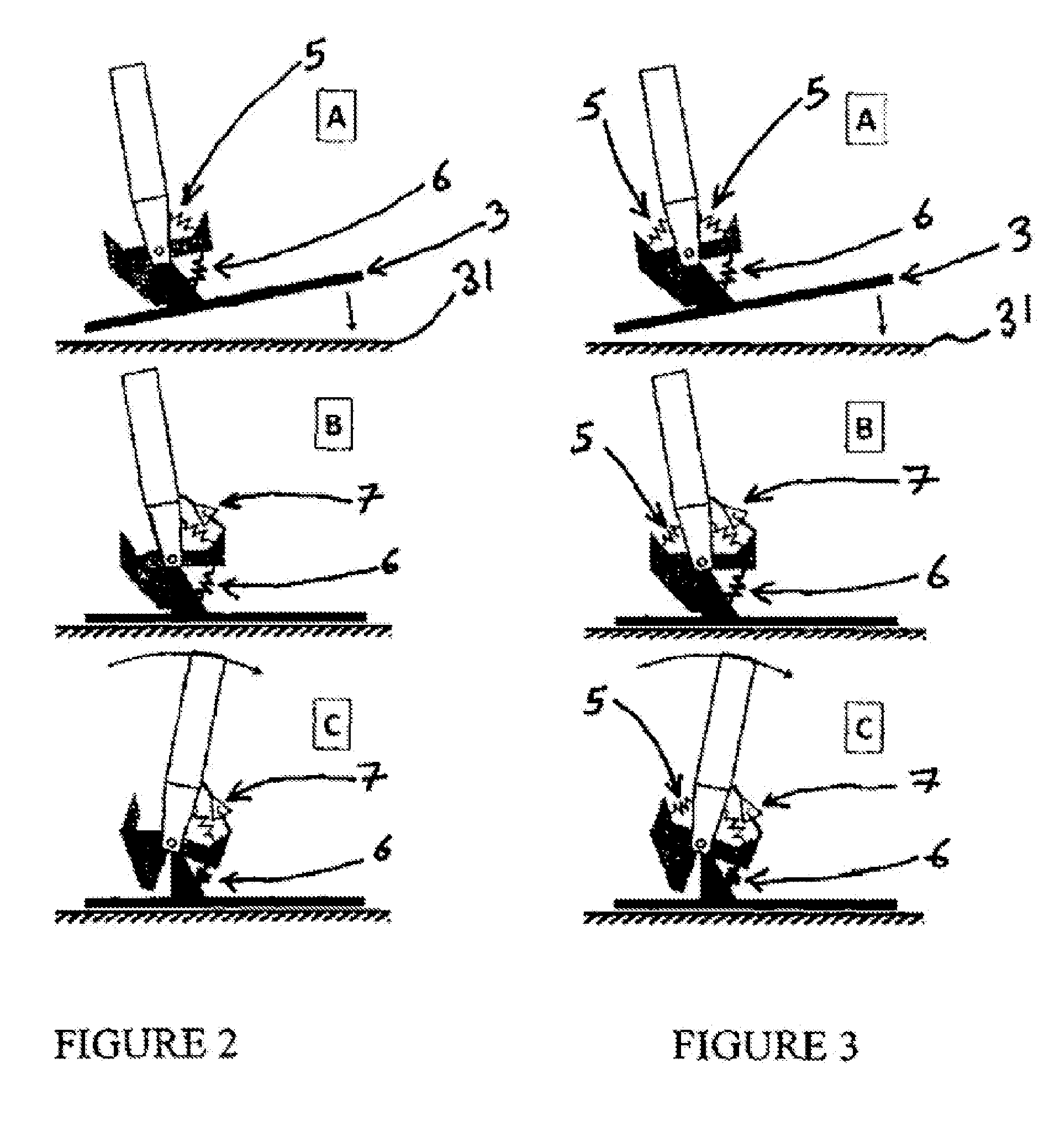Further improvements to ankle-foot prosthesis and orthosis capable of automatic adaptation to sloped walking surfaces
a technology of automatic adaptation and ankle-foot prosthesis, which is applied in the field of improved ankle-foot prosthetic and orthotic systems, can solve the problems of compromising user's balance, affecting the stability of users' feet, and many currently available ankle-foot mechanisms that do not allow ankle motion, so as to prevent or reduce the likelihood of compromising users' balan
- Summary
- Abstract
- Description
- Claims
- Application Information
AI Technical Summary
Benefits of technology
Problems solved by technology
Method used
Image
Examples
example i
Wrap Spring Clutch
[0131]The wrap spring clutch (FIG. 14, 14) comprised a spring coil (24) wrapped around a pair of equal diameter cylindrical arbors (19 and 20). The clutch used to lock out the low stiffness bumper in dorsiflexion needed to be small and light enough to fit within the reasonable dimensions of an anatomical ankle and foot, while still being capable of withstanding specific ankle moments of approximately 1.7 Nm·kg−1 (based on data from Hansen et al., 2004, “The Human Ankle During Walking: Implications for Design of Biomimetic Ankle Prostheses,” J. Biomech., 37(10): 1467-1474). For a 100 kg person, this would result in an ankle moment of 1700 Nm. During steady state walking, the clutch would be required to resist an external dorsiflexion moment only, thus a unidirectional clutch, such as the wrap spring clutch, would be acceptable, although other clutch systems may be considered.
[0132]Wrap spring clutch mechanisms have been used in other rehabilitation applications due ...
example ii
Adaptable Ankle
[0134]The adaptable ankle model presented in FIGS. 10C and D comprised three structures, shown assembled separately in FIG. 12 with non-structural parts removed. The shank structure (FIG. 12 A and white structures in FIG. 10) interfaced the adaptable ankle with the subject's socket and transferred moments to the driving arbor of the wrap spring clutch. The intermediate structure (FIG. 12B and gray structures in FIG. 10) received moments from the driven arbor of the wrap spring clutch, formed a track within which the left side of the shank structure rested, and applied forces to the high stiffness bumper. The foot structure (FIG. 12C and black structures in FIG. 10) supported the shaft about which all structures rotated, supported the high stiffness bumper, and held the footplate.
[0135]Between the intermediate structure and the foot structure rested the high stiffness bumper (FIG. 13). It was made from nominally 90 Shore A durometer polyurethane rubber (samples measure...
example iii
Testing
[0139]The adaptable ankle prototype was tested mechanically as well as on human subjects. The mechanical fatigue testing was performed based on the ISO 10328 cyclic test standards for prosthetic foot and ankle systems.
[0140]The cyclic fatigue testing was performed using a custom-built apparatus that applied separate heel and forefoot loads produced by pneumatic pistons. The adaptable ankle was tested to 100,000 cycles at the P4 load level, based on gait parameters for persons with body masses of 60-80 kg or 130-175 lb. The procedure was modified to account for the adaptable ankle prototype's unique function.
[0141]Results from the mechanical testing indicated that the central coil of the clutch spring, the coil which transitions from one arbor to the other, was causing damage that eroded material from the arbor rims to a depth of 0.51 mm). No other significant wear was observed. The clutch continued to hold proof test forces after cyclic testing.
[0142]The human subject testing...
PUM
 Login to View More
Login to View More Abstract
Description
Claims
Application Information
 Login to View More
Login to View More - R&D
- Intellectual Property
- Life Sciences
- Materials
- Tech Scout
- Unparalleled Data Quality
- Higher Quality Content
- 60% Fewer Hallucinations
Browse by: Latest US Patents, China's latest patents, Technical Efficacy Thesaurus, Application Domain, Technology Topic, Popular Technical Reports.
© 2025 PatSnap. All rights reserved.Legal|Privacy policy|Modern Slavery Act Transparency Statement|Sitemap|About US| Contact US: help@patsnap.com



